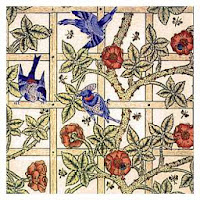Elsa Schiaparelli was an Italian designer mostly popular
between the two world wars. She started out her career by doing knitwear and
later expanded her creations to elaborate fashion pieces. Her clothes were
smart and sophisticated and designed mostly evening wear. She collaborated with
other prominent artists and designers like Alberto Giacometti and also Salvador
Dali who she hired to design fabric for her fashion house. She was part of the
Surrealist movement and worked in New York and Paris. For Schiaparelli, fashion
was as much about making art as it was about making clothes.
This evening coat is one of the best examples of her
artistic creations which was collaborated with French artist Jean Cocteau. It was
launched for the Autumn 1937 collection. Cocteau produced the drawing that is
translated on the coat. This is exhibited at the V&A Museum in London. The picture I took myself
when I visited the museum a few months ago. It was defiantly a piece that brought
a lot of attraction to the room with its fine elaborated decoration. It is a
very beautiful dark long silk jersey coat with gold thread and silk embroidery.
On the top back there is this double motif that can be read as two faces facing
each other and also as a vase of roses standing on a fluted column. The strong
lines embroidered till the bottom elongate more the coat. The embroidered pink
flowers that are hand stitched on the yoke and shoulders of the coat makes the
clothing more feminine and very elegant.
This particular evening coat reminded me of a particular
collection of Giovanni Bedin, which is one of my all time favourite collections of the 21st
century. For Autumn/ Winter 2010 Bedin designed a collection of some very elegant
and fun coats. All of them have basically the same shape but the each one is
very unique and different in material and design.This particular one below, has similar flowers
embroidered to the ones of
Schiaparellis’ coat. Just like in the coat from 1937 the embroidery in this one
make the garment very feminine and fun yet elegant. Contrary to Schiaparellis’
the embroidery is of different bright colours that make a good contrast on the
black dark silk. It is a finished corsetted and military-inspired coat which is
long til before your knees. The skirt is pleated and has a tutu underneath. This
one below is made to be worn on a younger age than the one of Schiaparellis’, I
would imagine this on a young woman on her early twenties.
Bibliography
Information and pictures taken from:
http://www.metmuseum.org/toah/works-of-art/1974.338.2_1978.288
January 2013 http://www.worthparis.com/thedesigner.asp
searched on the 26th of October 2013







.jpg)




+'Tulip+and+Willow',+1873+pencil+and+watercolour.jpg)





.jpg)









